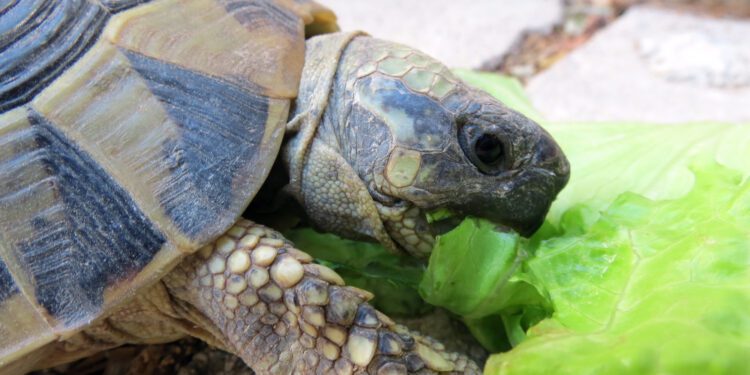Specially trained spaniels—aka turtle dogs—are helping researchers find and study elusive ornate box turtles.
Ruger, Yogi and Skeeter are unphased by the on-again, off-again rain this chilly morning. The three Boykin spaniels have a job to do—and it’s obvious from their wagging tails and enthusiastic trotting that they love their occupation.
“Find turtle! Find turtle!” shouts the dogs’ owner and trainer John Rucker. And the three chocolate-colored dogs are off again, scampering through the prairie at TNC’s Nachusa Grasslands Preserve in Illinois, pausing every few feet to sniff a fallen branch or the roots of native grasses.
The dogs are searching for ornate box turtles (Terrapene ornata ornata), a threatened species in Illinois, for a box turtle monitoring project being conducted by the Wildlife Epidemiology Lab at the University of Illinois Urbana-Champaign (UIUC) and the Brookfield Zoo Chicago (BZC). TNC encourages scientists and researchers from around the world to use our preserves as living laboratories to study wildlife and other conservation issues. Nachusa provides a high-quality habitat for ornate box turtles—and for the scientists who study them.
UIUC veterinarian and BZC’s Director of Conservation Medicine and Sciences Dr. Matt Allender leads the investigation and warns us that the chance of finding many ornate box turtles today is low. It’s not so much the drizzling rain as the 50-some degree Fahrenheit temperature. Turtles tend to hide underground on chilly days.
Our group’s disappointment is tempered by the joy of watching the floppy-eared affectionate spaniels—as well as the beauty of the prairie in early spring. TNC’s Dr. Elizabeth Bach, ecosystem restoration scientist at Nachusa, points out native flowers, including the blue spires of wild lupine (Lupinus perennis) and the bright yellow clusters of Golden Alexanders (Zizia aurea).
Just when the expedition is about to wrap up for the morning, Rucker shouts: “Turtle! Turtle!”
We all rush over to see: Skeeter stands triumphant by Rucker’s side, holding an ornate box turtle tenderly in her mouth. “You see the way she just wouldn’t give up, circling, circling around the spot,” says Rucker proudly of Skeeter. “She knew she could smell the turtle, but she just had to micro hunt until finally she was touching it with her snout.”
The ornate box turtle is gently removed from Skeeter’s mouth and held out for us to see. The fist-sized turtle has a lovely domed shell embellished with yellow rays like those in a child’s drawing of the sun. It has almost completely sealed itself inside its shell—a box turtle defensive trait. All members of this species have a hinged lower casing (plastron), which allow them to tightly box themselves up whenever they sense danger.
The ornate box turtle population has been declining for decades in Illinois. A primary reason is the conversion of the turtle’s home turf for agriculture and development. These terrestrial (land-based) reptiles live only in prairie, grassland and oak savanna habitats—preferably those with sandy soil, which allow them to easily burrow underground.
“You have probably seen the statistic that less than 0.01% of the original prairie remains in Illinois,” says Allender. “For ornate box turtles, this means there are not many suitable places left for them to live in the state.”
TNC’s Nachusa Grasslands offers the turtles an expansive home. At 4,000 acres, the preserve is one of the largest prairie restoration sites in the state.
“From a turtle preservation perspective, the quality of the site matters,” Bach says. “You have to keep their spaces healthy and let them do their turtle thing.”
Courtesy Nature Conservancy












